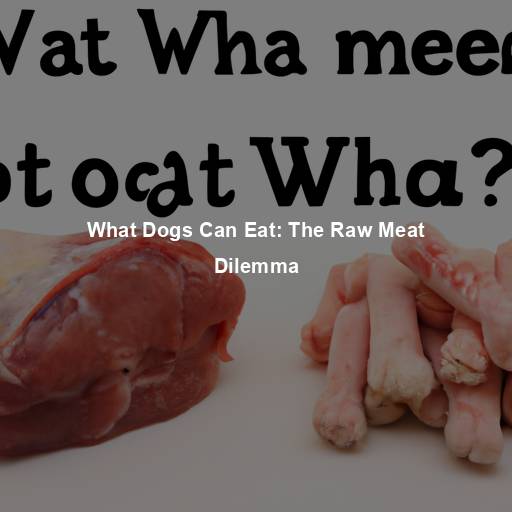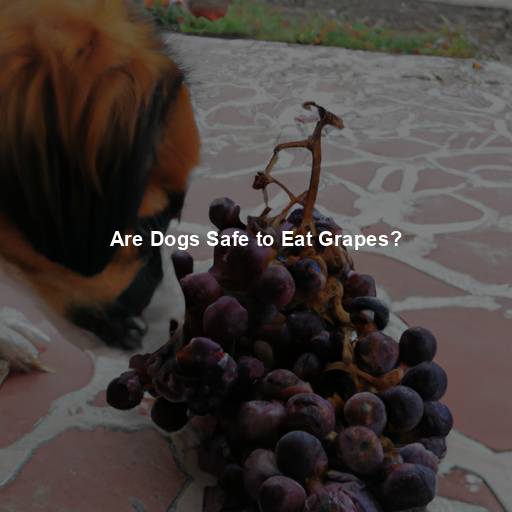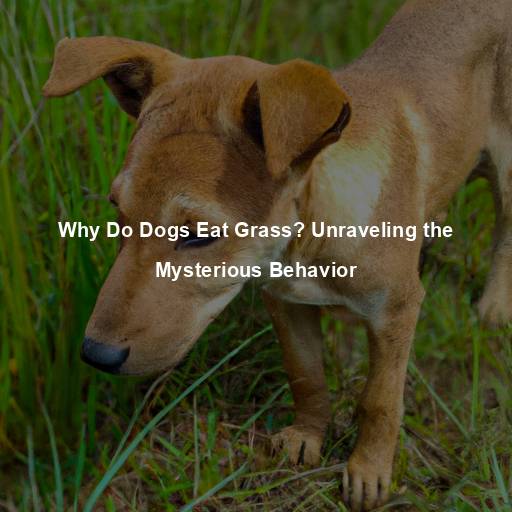What Dogs Can Eat: The Raw Meat Dilemma
Last Updated on November 10, 2023 by Evan
Contents [hide]
- 1 Understanding the Raw Meat Diet for Dogs
- 2 The Potential Risks of Feeding Dogs Raw Meat
- 3 Consulting with Veterinarians: The Key to a Balanced Diet
- 4 Finding a Middle Ground: Balanced Alternatives
- 5 FAQs – What Dogs Can Eat Raw Meat
- 5.1 What is a raw meat diet for dogs?
- 5.2 Is it safe for dogs to eat raw meat?
- 5.3 What types of raw meat are suitable for dogs?
- 5.4 Can dogs eat raw bones along with the meat?
- 5.5 Are there any risks associated with feeding raw meat?
- 5.6 Can all dogs eat a raw meat diet?
- 5.7 How should I transition my dog to a raw meat diet?
- 5.8 Can puppies eat raw meat?
Understanding the Raw Meat Diet for Dogs
The Rise of the Raw Meat Diet Trend
The raw meat trend has taken the pet industry by storm, leaving pet owners perplexed and intrigued. The proponents of this diet argue that it aligns with the primal instincts of our canine companions, promising a healthier and more authentic experience. However, the scientific community is divided on the matter, fueling the ongoing debate surrounding the safety and potential benefits of feeding dogs raw meat. In this article, we will unravel the complexities of the raw meat dilemma, presenting you with an informed perspective on this controversial topic.
The Concept behind the Raw Meat Diet
Indulge your furry companions with the primal charm of the raw meat diet, affectionately dubbed “BARF” (Biologically Appropriate Raw Food). This captivating concept proposes that our domestic dogs, tracing their ancestral lineage to majestic wolves, should relish a diet mirroring their wild brethren. Enthusiasts passionately contend that the consumption of uncooked meat, bones, and organs bestows vital nutrients, grants perfect dental hygiene, and elevates their overall state of existence. Engage in this captivating debate and discover the tantalizing secrets of canine well-being!
Potential Benefits of the Raw Meat Diet
There is a growing trend among dog owners who strongly advocate for the raw meat diet, touting a plethora of potential benefits for our furry companions. From improved digestion to enhanced coat health, these enthusiasts claim that feeding dogs raw meat can unlock a world of health advantages. While some remain skeptical, there is an air of intrigue and curiosity surrounding this eccentric dietary choice, leaving many to wonder if raw meat is the key to a healthier, happier dog.
For our furry friends, there seems to be an intriguing trend gaining traction – the raw meat diet. Experts argue that this unconventional approach to doggy dining might actually make digestion a breeze for our four-legged pals, proving to be a healthier alternative to processed pet foods. Curiosity lingers as we explore the intriguing world of raw feeding, leaving us pondering the potential benefits it may bring to our canine companions.
Achieving a lustrous coat and healthy skin has always been a perplexing puzzle for pet owners. However, incorporating raw meat diets into your furry friend’s meal plan may hold the key to unlocking the secret. Bursting with essential fatty acids, these diets are believed to be the missing piece in the quest for radiant skin and a glossy coat, leaving you perplexed no more.
3. Reduced Allergies: Some dog owners report a reduction in allergies and food sensitivities when their pets switch to a raw meat diet.
One aspect that supporters of feeding dogs raw meat emphasize is the potential for a noticeable boost in energy levels and overall vitality. They propose that this dietary approach could invigorate our furry companions, leaving them with a renewed sense of vigor and liveliness. By providing dogs with a raw meat diet, enthusiasts claim that they are offering a natural source of nourishment that can potentially unlock a hidden surge of energy, leaving pet owners astounded by the newfound liveliness of their four-legged friends. While the exact mechanisms behind this phenomenon remain a mystery, the remarkable anecdotal accounts of increased energy provide food for thought and a perplexing subject for further investigation.
5. Better Dental Health: Chewing on raw bones is believed to help maintain strong teeth and gums.
While these potential benefits sound appealing, it’s important to approach the raw meat diet with caution and consider the potential risks involved.
The Potential Risks of Feeding Dogs Raw Meat
Bacterial Contamination
Feeding our beloved dogs raw meat has long been a topic of concern, and rightly so. The potential dangers lurking within this choice leave us pondering the risks that come with offering our furry friends a diet containing raw meat. It is no secret that raw poultry and ground meat can play host to a variety of harmful bacteria, such as Salmonella and E. coli, which can bring about serious health complications for both dogs and their human companions. As responsible guardians, we must ensure we are well-informed about the perplexities that arise when considering the raw meat route for Fido’s nutrition.
Nutritional Imbalances
When it comes to nourishing our furry friends, finding the right balance is absolutely crucial. While raw meat has its merits, it’s important to consider the bigger picture. Commercial dog foods offer a comprehensive blend of vital vitamins, minerals, and other key components that might be missing from a raw meat diet, ensuring that your pup gets all the nutrients they need for optimal health. Without proper formulation, relying solely on raw meat may result in imbalances and deficiencies that could impact your dog’s well-being.
Risk of Choking and Intestinal Obstruction
When it comes to dog diets, the topic of feeding them raw bones is not without controversy. Supporters of this practice claim that it can be a safe and enjoyable experience, but the truth is, there are potential risks involved. The size and splintering nature of the bones can often lead to choking hazards or intestinal blockages, posing a real threat to our beloved furry companions. To ensure their safety, it’s of utmost importance to carefully select suitable bones and closely monitor our dogs as they indulge in their chewy delights.
Zoonotic Diseases
Another concern regarding the raw meat diet is the potential transmission of zoonotic diseases. Zoonotic diseases are infections that can be transmitted between animals and humans. Handling raw meat and coming into contact with feces from dogs on a raw meat diet can increase the risk of contracting these diseases.
Consulting with Veterinarians: The Key to a Balanced Diet
The Importance of Professional Guidance
When it comes to deciphering the complex realm of raw meat for your four-legged friend, it becomes paramount to seek the wisdom and expertise of a qualified veterinarian. These knowledgeable professionals possess the ability to offer tailored insights and recommendations catered to the unique needs, health status, and dietary requirements of your beloved canine companion. With their invaluable guidance, you can confidently ensure that your furry pal receives a meticulously balanced diet that caters to their nutritional necessities, all while mitigating the perplexing risks that may lurk beneath the surface.
Understanding Your Dog’s Unique Needs
Every dog is unique, and their dietary requirements may vary. Factors such as age, breed, size, activity level, and overall health must be taken into consideration when determining the most suitable diet for your furry friend. Veterinarians can perform thorough evaluations and offer tailored recommendations to support your dog’s optimal health.
Transitioning to a Raw Meat Diet
If you decide to transition your dog to a raw meat diet, it is essential to do so gradually. Abrupt changes in diet can lead to digestive upset and discomfort. Your veterinarian can guide you through the transition process, ensuring a smooth and safe adjustment.
Finding a Middle Ground: Balanced Alternatives
Commercial Raw Food Diets
If you’re one of those pet owners who find the raw meat diet fascinating but worry about the potential hazards, fret not! There’s a perfect solution for you – commercial raw food diets. These specially formulated diets offer all the advantages of raw meat without the anxiety-inducing risks. With strict testing and quality control protocols in place, commercial raw food products are as safe as can be, leaving you and your beloved fur baby bursting with joy and perplexed by the endless possibilities.
Home-Cooked Diets
Looking for a refreshing alternative? Look no further than a personalized, home-cooked diet for your furry friend. By taking the reins on ingredient selection and cooking techniques, you’ll have the power to ensure a well-rounded, nutritionally sound meal. Don’t forget to seek guidance from a top-notch veterinary nutritionist or skilled pet nutrition-savvy veterinarian who can help you tailor the perfect recipe to meet your dog’s unique dietary requirements.
High-Quality Commercial Dog Foods
Lastly, high-quality commercial dog foods can provide a complete and balanced diet for your furry companion. Look for products that have undergone rigorous testing, contain high-quality ingredients, and are backed by scientific research. These foods are designed to meet the nutritional needs of dogs while minimizing the risks associated with raw meat diets.
Is it Safe to Feed Dogs Raw Meat?
The safety of feeding dogs raw meat is a topic of concern for many pet owners. While raw meat can contain harmful bacteria, such as Salmonella and E. coli, it’s important to note that dogs have a different digestive system than humans. Their stomachs have a higher acidity level, which helps them better tolerate certain bacteria.
However, it’s crucial to practice proper food handling and hygiene to minimize the risk of bacterial contamination. This includes washing hands thoroughly after handling raw meat, keeping raw meat separate from other foods, and cleaning all utensils and surfaces that come into contact with raw meat.
Can Dogs Get Sick from Eating Raw Meat?
Although dogs may appear to possess a knack for handling certain bacteria, the consumption of raw meat still carries a degree of hazard. Unbeknownst to many, our furry friends are not completely impervious to the perils that lie within contaminated meat, as bacterial infections and pesky parasites can sneakily infiltrate their systems, resulting in a range of unpleasant symptoms. From tumultuous episodes of vomiting and diarrhea to an unwelcome surge of lethargy, it’s a perplexing reminder that caution should always be exercised when it comes to our pets’ dietary choices.
It’s important to monitor your dog closely for any signs of illness and seek veterinary care if you suspect they may have consumed contaminated raw meat. Regular veterinary check-ups and fecal testing can also help detect any underlying health issues or infections.
Are There Any Alternatives to the Raw Meat Diet?
If you’re hesitant about the raw meat diet or it doesn’t align with your lifestyle, there are several alternative feeding options to consider. These include:
Commercially Prepared Raw Diets
In this fast-paced world we live in, finding a safe and convenient way to provide a raw diet for our furry friends can be quite perplexing. Thankfully, the rise of commercially prepared raw diets has burst onto the scene, offering a solution that combines both convenience and safety. These specially formulated diets undergo rigorous testing and quality control measures, ensuring that our dogs receive all the necessary nutrients while minimizing the risks associated with handling raw meat in our own kitchens. With these diets, we can now feed our four-legged companions a raw diet without losing sleep over safety concerns.
High-Quality Commercial Dog Foods
When it comes to nourishing your furry companion, there’s no shortage of possibilities. One avenue worth exploring is the realm of high-quality commercial dog food that caters to their every nutritional need. Hunt for brands that prioritize authentic meat as the star ingredient, serving up a harmonious blend of protein, carbs, and fats, while shunning those pesky artificial additives. For a truly tailored pick, don’t hesitate to seek the sage advice of your trusted veterinarian.
Home-Cooked Diets
For those who desire to take charge of their canine companion’s nourishment, the option of crafting homemade meals presents itself alluringly. Yet, navigating this path requires a delicate dance, one that necessitates harmonic collaboration with a seasoned veterinary nutritionist or a knowledgeable practitioner well-versed in the intricate realm of pet sustenance. Ensuring the equilibrium of nutritional elements and catering to your precious doggie’s unique dietary requirements become paramount in this enigmatic journey.
How Do I Transition My Dog to a Raw Meat Diet?
If you decide to transition your dog to a raw meat diet, it’s essential to do so gradually to avoid digestive upset. Here are some steps to follow:
Are you looking to elevate your dog’s nutrition game? Consider gradually incorporating small portions of raw meat into their daily meals. This unconventional approach may present both benefits and challenges, leaving pet owners perplexed about its impact on their furry friend’s well-being. With careful monitoring and consultation with a trusted veterinarian, you can navigate through the burst of questions and ensure your dog’s diet remains balanced and tailored to their specific needs.
As your furry friend embarks on a new dietary journey, it’s time to delve into a world of tantalizing taste and wholesome nutrition. With a slow and steady approach, introduce the delectable goodness of raw meat into their mealtime repertoire, while gradually bidding farewell to the confines of commercial dog food. Over the course of several weeks, watch with intrigue as their palate evolves and their vitality soars, embracing a more nourishing and vibrant way of sustenance.
3. Monitor your dog’s response to the diet change and adjust accordingly.
When embarking on the journey of transitioning your beloved companion to a new stage, seek the invaluable guidance and unwavering support of a diligent veterinarian. They possess the expertise and knowledge to navigate the perplexing pathways of change, ensuring the optimal well-being of your cherished companion. By collaborating with these trusted professionals, you can rest assured that you are embarking on a journey punctuated by informed decisions and companionship, leading to a brighter future for your furry friend.
When it comes to switching your furry friend to a raw meat diet, it’s important to bear in mind that every dog is as individual as a snowflake. The journey towards this new diet can be a rollercoaster ride filled with twists and turns, but fear not! By teaming up with your trusted veterinarian, you’ll have a guide to navigate this perplexing path, ensuring that your pup’s transition is as smooth as silk and fruitful like a bountiful harvest.
FAQs – What Dogs Can Eat Raw Meat
What is a raw meat diet for dogs?
Discover the tantalizing world of raw meat diets for dogs! Delve into the realm of feeding your beloved canines a delectable blend of uncooked meat, bones, organs, and a sprinkle of nature’s finest fruits and veggies. Brace yourself for a journey that mirrors the wild instincts of these four-legged wonders, as they feast on raw prey like their ancestors did. Get ready to unlock the mysteries of this evolutionary approach and embark on a captivating adventure for your furry companions!
Is it safe for dogs to eat raw meat?
When it comes to nourishing our beloved canines, the idea of serving them raw meat may raise a few eyebrows. But fear not! While it may seem perplexing at first, with the right precautions and guidelines in place, feeding raw meat to dogs can be a safe and beneficial option. Bursting with essential nutrients and digestive benefits, it is crucial to ensure that the raw meat is always fresh and obtained from trusted sources. To navigate this unfamiliar territory, consult a knowledgeable veterinarian who can guide you in tailoring a diet that meets your dog’s unique dietary requirements while keeping potential foodborne illnesses at bay.
What types of raw meat are suitable for dogs?
As avid pet owners, we often find ourselves reflecting on what we should feed our furry friends. The topic of raw meat for dogs has certainly sparked a plethora of opinions, leaving us perplexed and bursting with questions. However, after careful consideration and consultation with experts, we can confidently state that dogs can indeed enjoy a diet consisting of various types of fresh, unseasoned raw meat. Whether it’s succulent beef, tender chicken, wholesome turkey, savory lamb, or even the occasional fishy delight, it’s crucial to ensure that these meats are free from any additives or preservatives that could potentially harm our beloved pooches. When incorporating raw meat into their diet, lean cuts of muscle meat should take center stage, providing our furry companions with a nourishing and balanced meal.
Can dogs eat raw bones along with the meat?
Absolutely, raw bones can absolutely be a healthy addition to a dog’s diet! Not only do they offer a plethora of vital nutrients, but they also provide a formidable mental workout and promote good oral hygiene by preventing those pesky tartar buildups. Nevertheless, one must exercise caution and provide bones that correspond to the dog’s size and breed. Steer clear of cooked bones, though, as they have a knack for splintering and posing potential choking or blockage risks. And of course, always keep a watchful eye on your furry friend while they gnaw away at their bone feast.
Are there any risks associated with feeding raw meat?
When it comes to feeding our furry friends raw meat, there are a few things to consider. While it can provide a natural and beneficial diet for dogs, there are also potential hazards that should not be taken lightly. Bacterial contamination, such as Salmonella or E. coli, can be lurking in raw meat, posing a danger to both dogs and us humans. To mitigate these risks, it’s crucial to adhere to proper food safety protocols, like regular disinfection and using clean utensils to handle the meat. Additionally, it’s important to ensure a balanced diet for our pooches, including a variety of meats, bones, organs, and, if needed, supplements to meet their nutritional needs.
Can all dogs eat a raw meat diet?
While many dogs thrive on a raw meat diet, it may not be suitable for every dog. Some dogs may have specific health conditions, allergies, or digestive sensitivities that require a different type of diet. It is advisable to consult with a veterinarian before transitioning your dog to a raw meat diet or making any significant changes to their current diet.
How should I transition my dog to a raw meat diet?
When transitioning a dog to a raw meat diet, it is recommended to do so gradually over a period of at least one week. Start by introducing small amounts of raw meat mixed with the dog’s regular food. Gradually increase the proportion of raw meat while decreasing the amount of kibble. This allows the dog’s digestive system to adjust to the new diet without causing any gastrointestinal discomfort.
Can puppies eat raw meat?
When it comes to feeding our adorable furry friends, the transition from mother’s milk to solid foods can be a bit of a perplexing journey. But fear not, for with their digestive system becoming more robust, puppies can indeed partake in the indulgence of raw meats. However, the path to puppy palates filled with this delectable delight should be paved with expert advice from a trusted veterinarian – after all, their nutritional needs in this delicate phase differ considerably from those of adult dogs. To ensure optimal growth and development, it’s important to approach raw meat diets for puppies with a carefully balanced and tailored approach.







